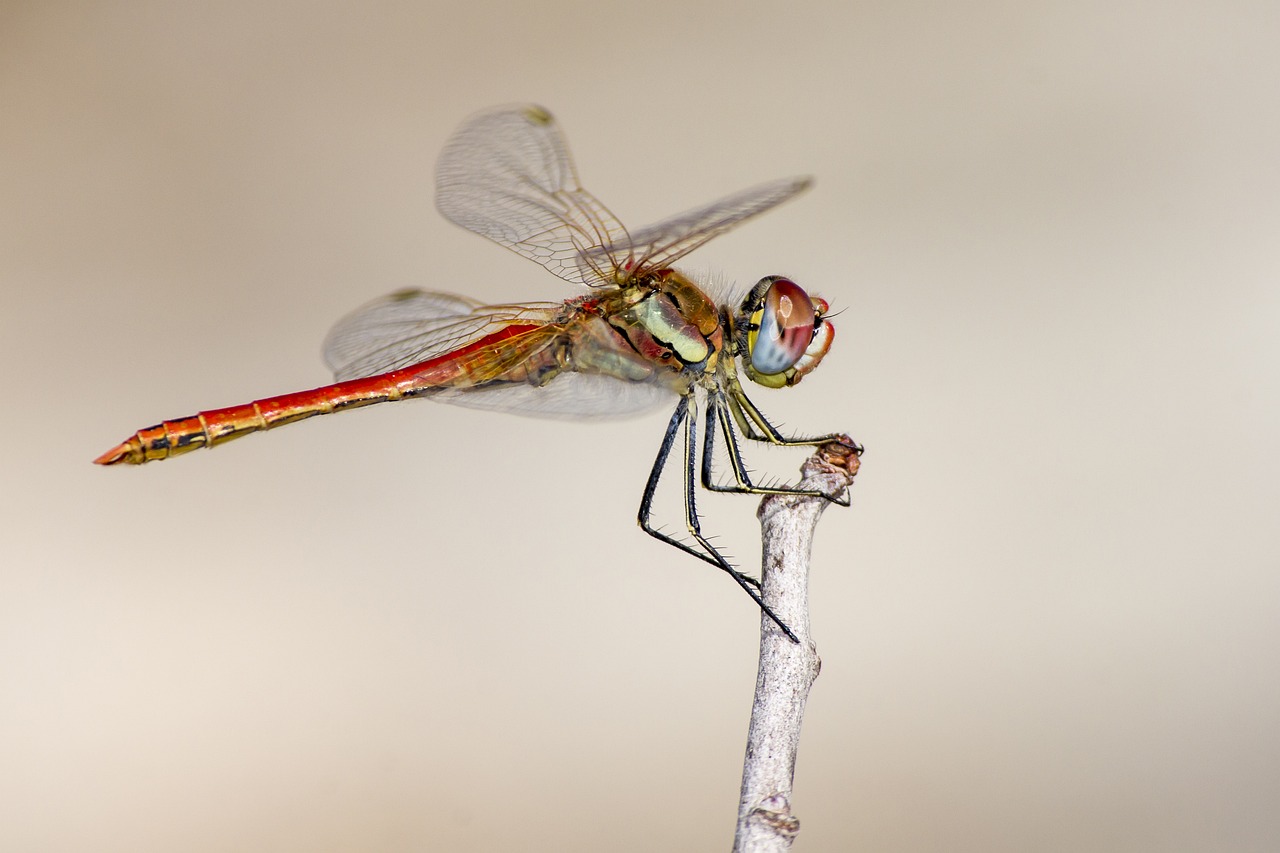Red-veined Darter (Sympetrum fonscolombii) – Overview
The Red-veined Darter (Sympetrum fonscolombii) is a vibrant, fast-flying dragonfly found across Europe, Africa, and Asia. It is known for its bright red males, distinctive red veins on the wings, and its ability to migrate long distances. This species thrives in warm climates and can even colonize temporary water bodies that other dragonflies avoid.
General Information:
- Scientific Name: Sympetrum fonscolombii
- Common Name: Red-veined Darter
- Family: Libellulidae (Skimmer dragonflies)
- Size:
- Body length: 34–40 mm
- Wingspan: 55–65 mm
- Lifespan: Several months (adults), up to a year (including larval stage)
Identification & Appearance:
- Males:
- Bright red abdomen with black markings on segments
- Red veins in the forewings (key identification feature)
- Brownish-red thorax with yellow patches on the sides
- Reddish eyes with a blueish tint on the lower part
- Females & Immature Males:
- Yellowish-brown abdomen with subtle black markings
- Red veins on the wings, but less intense than in males
- Eyes have a mix of green, blue, and brown hues
- Wings:
- Transparent with red veins, particularly visible on the forewings
- Pterostigma (wing spot): Pale yellow with black borders
Distribution & Habitat:
- Found across Southern & Central Europe, North Africa, the Middle East, and parts of Asia
- Expanding its range northward due to climate change
- Prefers lakes, ponds, slow rivers, marshes, and temporary wetlands
- Often found in coastal areas and islands
Behavior & Ecology:
- Migratory species – moves in response to climate and water availability
- Active hunters, feeding on small flying insects like mosquitoes and midges
- Frequently perches on rocks, plants, or reeds near water
- Mating:
- Occurs in flight, with the classic “wheel position” seen in dragonflies
- Males are territorial, often chasing away rivals
- Egg-laying:
- Females drop eggs while hovering over water, often with the male guarding nearby
Predators & Threats:
- Predators: Birds, frogs, spiders, and larger dragonflies
- Threats:
- Habitat loss due to wetland drainage
- Pollution affecting breeding sites
- Extreme weather events impacting migration patterns
Conservation Status:
- IUCN Red List: Least Concern (LC) – Stable population with a wide range
- Benefits from climate warming, allowing it to expand northward
Interesting Facts:
- One of the few dragonflies that migrate, sometimes covering hundreds of kilometers
- Can breed in salty water, which is unusual for dragonflies
- Unlike many dragonflies, it is active year-round in warmer regions
Would you like tips on identifying similar dragonflies or photographing them? 😊📸
Visited 861 times, 22 visit(s) today
Views: 1347
Subscribe to the newsletter:
